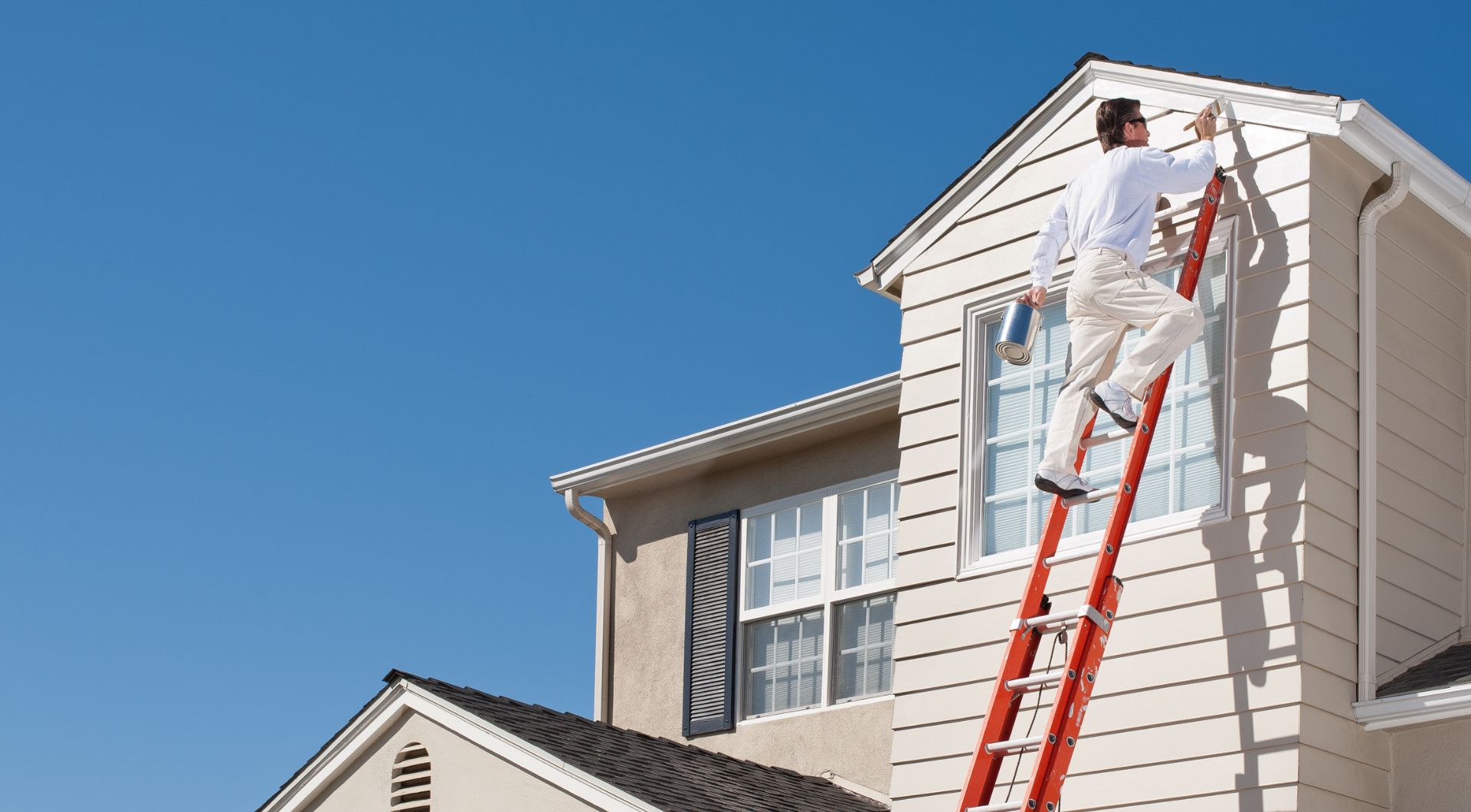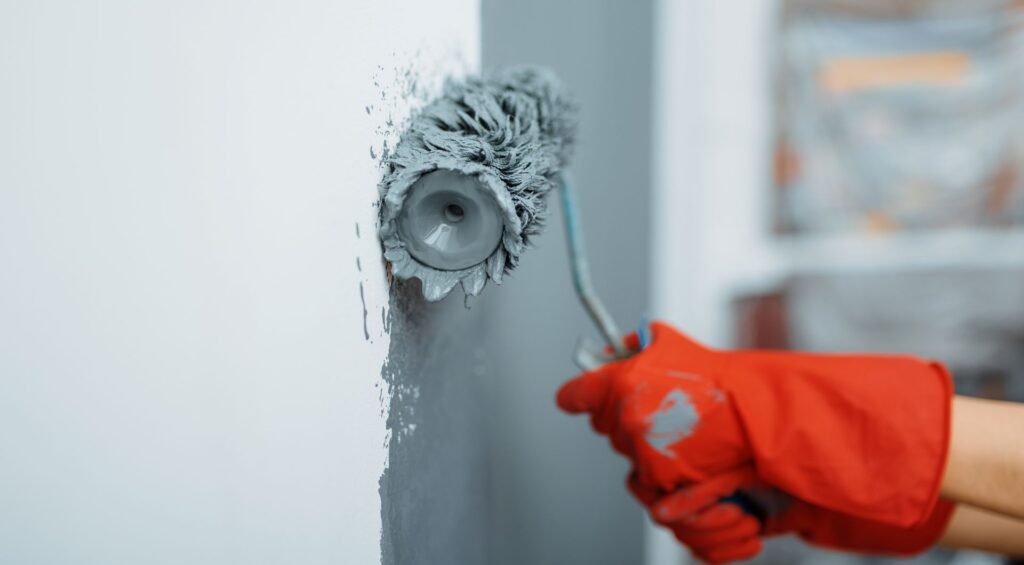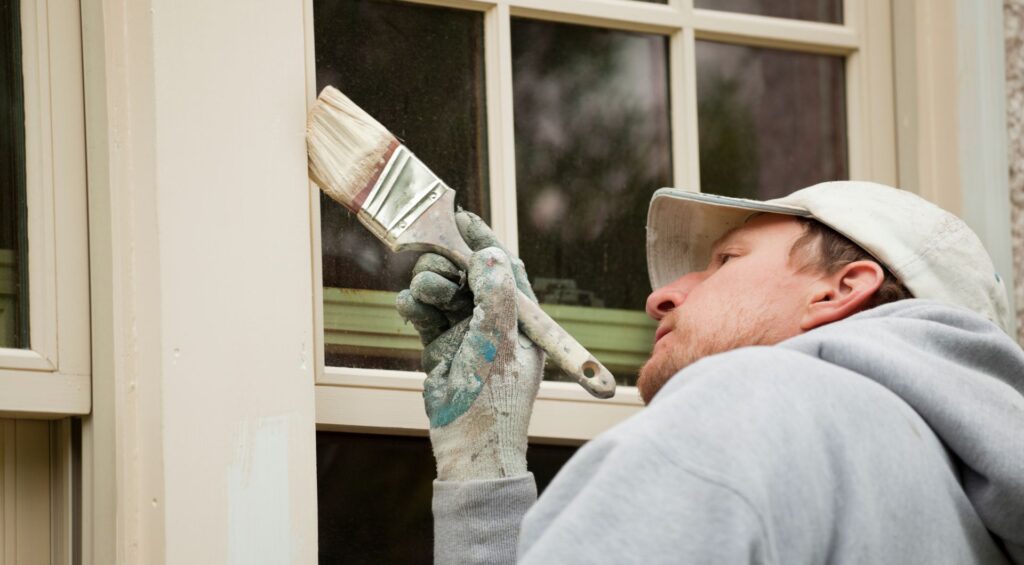You walk outside and instantly begin to sweat.
Your eyes are immediately drawn to the sad state of your home’s exterior, and the realization hits — you can’t put painting off another day.
But it’s sweltering! How are you supposed to paint when it’s too hot to paint outside?
We’re glad you asked!
Here you’ll discover the ins and outs of painting in hot weather, including the risks, the best paint options, and who to call if you decide you have better things to do with your summer.
Table of Contents
- Can It Be Too Hot To Paint Outside?
- When Is It Too Hot To Paint Outside?
- 4 Risks of Painting When It’s Too Hot Outside
- The 3 Best Paint Types for Hot Weather
- Why Hiring Professionals for Exterior Painting in Hot Weather Is a Smart Move
- Beat the Heat with a Professional Paint Job From Two Brothers Painting
Can It Be Too Hot To Paint Outside?
Yes.
To ensure proper drying and adhesion of the paint, both oil-based and latex paints have temperature limits.
When Is It Too Hot To Paint Outside?
The general rule is that if the surface temperature is higher than 90°F, it’s best to wait to paint until the weather is cooler.
If you’re wondering how hot is too hot to paint outside, temperature cut-offs for specific types of paints include:
- Latex paints: Surface and air temperature under 85°F
- Oil-based paints: Surface temperature under 120°F
- All paints: If you’re unable to touch the surface for more than 5 seconds, it’s too hot to paint.
Is it time to give your home’s exterior a facelift? Two Brothers Painting specializes in hot-weather painting and can get the job done right — while you sit in the shade sipping a cool lemonade. Contact our team today for an estimate.
4 Risks of Painting When It’s Too Hot Outside
If you decide to go for a DIY paint project, more power to you, but you’ll want to be aware of the risks of painting when it’s hot outside.
If you decide it’s just not worth the risks and that hiring professionals is the best option, the exterior paint experts at Two Brothers Painting would love to take care of the job for you.
We invite you to reach out today for an estimate!
#1: Paint May Dry Too Fast
One problem of trying to paint when it’s too hot to paint outside is that the paint can dry too quickly when the temperatures are above the recommended highs.
Rather than laying down smoothly, the paint begins to set right away, leaving behind:
- Roller marks
- Visible brush strokes
- An uneven finish
Drying too quickly also makes it difficult to maintain a “wet edge” as you paint, which is necessary to seamlessly blend sections together — meaning you’ll likely wind up with obvious lap marks and streaks across large surfaces.
#2: Uneven Finish and Streaks
Painting in extreme heat means the surface of the paint dries at different rates, causing some areas to appear blotchy or have inconsistent shine or color.
The combination of these issues results in a weaker overall paint film, reduced durability, and a paint job that will need to be touched up much sooner than expected.
To keep these problems from occurring, choose to paint on days when the temperature is moderate — ideally between 50°F and 85°F — and take a break during the middle of the day when the sun is at its hottest, if possible.
#3: Shorter Working Time
When it’s too hot to paint outside, your window of working time becomes considerably smaller. Since the high temperatures make the paint dry especially quickly, you lose the ability to work slowly and carefully. There’s less time for critical details like spreading and smoothing the paint before it starts to set, which can lead to obvious brush or roller marks, visible lap lines, and splotchy coverage.
#4: Health and Safety Concerns
If you decide to complete the project when it’s too hot to paint outside, it can raise serious health and safety concerns for the painter, including:
- Your body having to work harder to keep you cool
- A risk of heat exhaustion or heat stroke, symptoms of which may include:
- Dizziness
- Headache
- Rapid heartbeat
- Nausea
- Confusion
- Excessive sweating or suddenly stopping sweating
- Inhaling excessive volatile organic compounds (VOCs), since high heat accelerates their evaporation.
- Sunburn, since you may be tempted to wear less clothing due to the excessive heat
- Increased risk of dehydration
The 3 Best Paint Types for Hot Weather
#1: Acrylic Latex Paints
Acrylic latex paints are typically your best choice for painting in hot weather. These water-based paints dry quickly and are more resistant to cracking and blistering in direct sunlight. They also expand and contract as the temperature changes, preventing peeling.
Acrylic latex paints offer:
- Flexibility and durability: They expand and contract with temperature fluctuations, which can prevent cracking, peeling, or blistering.
- UV resistance: They contain pigments that are especially resistant to fading.
- Moisture resistance: They’re water-resistant once dry and can withstand moisture from rain or humidity.
- Mold and mildew resistance: They may contain additives to inhibit the growth of mold and mildew.
#2: UV-Resistant or Reflective Paints
Some exterior paints are specially formulated for sun-drenched areas, offering better UV resistance to prevent fading and chalking. These formulations contain special binders and additives to ensure superior UV resistance, keeping your home looking fresh and vibrant for longer.
Look for labels that indicate “UV-resistant,” “fade-resistant,” or “sunproof” and contain:
- Titanium dioxide
- Zinc oxide
- Acrylic resins
- Urethane binders
#3: Paints Designed for Your Surface
For decks, stucco, brick, or metal surfaces, choose products specifically designed for the material, as heat affects each differently.
Many major paint brands offer “hot climate” versions of their top exterior paints, which can be worth considering for durability.
Why Hiring Professionals for Exterior Painting in Hot Weather Is a Smart Move
Right Timing
Professional exterior painters have experience painting in the heat and understand how to schedule work around temperature peaks to avoid paint failure.
Typically, they begin in the shade and continue to follow it around the house to avoid direct sun exposure, which can cause the paint to set too quickly and dry with brush strokes, roller marks, or an overall uneven finish.
They may also opt to work in early mornings or late afternoons, when the humidity is lower and temperatures are somewhat milder.
Right Products
Professional painters understand the nuances of selecting the right types of paint and finishes for optimal performance in heat and sun.
They’ll take into consideration the environment you live in, your construction materials, and the amount of sun exposure your home receives to ensure the paint they select will withstand the test of time.
Preventative Measures
Trained painters can avoid issues like bubbling, blistering, and uneven coats by applying preventative measures such as:
- Ensuring surfaces are cool before painting. If they’re too hot to touch, they’ll lightly mist them with water and allow them to dry completely before painting.
- Avoiding painting directly on heat-retentive surfaces like metal or dark siding after sun exposure.
- Applying thinner coats that dry evenly and are less prone to blistering or cracking in high temps.
- Allowing sufficient drying time between coats to ensure proper adhesion.
- Monitoring paint consistency and stirring the paint frequently.
- Keeping paint cans in shaded areas when not in use to prevent the product from skinning or thickening prematurely.
- Using the right tools, like high-quality brushes and rollers designed to handle quick-drying paints.
- Frequently inspecting their work for issues like blistering or peeling.
Efficiency
Hiring exterior painting professionals to get the job done in hot weather saves you time, effort, and mistakes.
You’ll also avoid:
- Costly do-overs
- The expense of wasted materials
- The hassle of working in sweltering conditions
Ultimately, a professional paint job lasts far longer and looks crisper and cleaner. Professionals also stand behind their work and generally provide touch-up services or warranties that help protect your investment and give you peace of mind.
Painting the exterior of your home is a huge undertaking in any season. When it’s hot outside, the job becomes infinitely more stressful and labor-intensive. That’s why smart homeowners hire professionals, like the team at Two Brothers Painting. Squeeze the most out of your summer while experts tackle the hard work with skill and precision.
Beat the Heat with a Professional Paint Job From Two Brothers Painting
If you’re looking for professional exterior painters in the Portland Metro, look no further than Two Brothers Painting.
Our team is dedicated to quality, and we approach every exterior painting project with one goal in mind — delivering the highest quality, gorgeous results to our customers. We aren’t finished with a project until we reach our goal. There’s a reason many of our clients are referrals or repeat customers, and we’d love to add you to our growing list!
Reach out today for an estimate.




